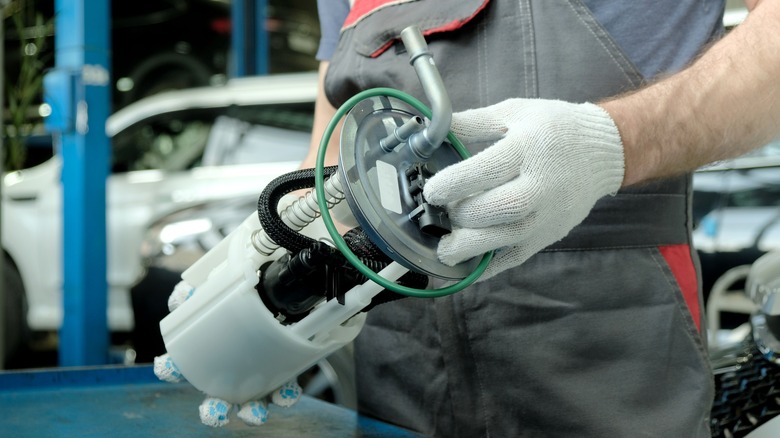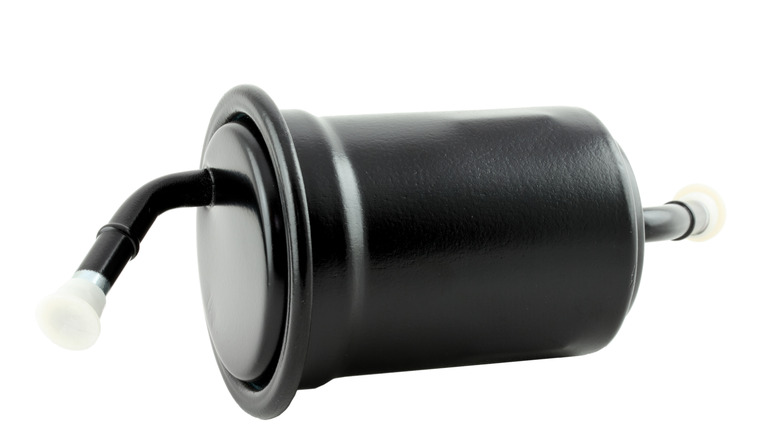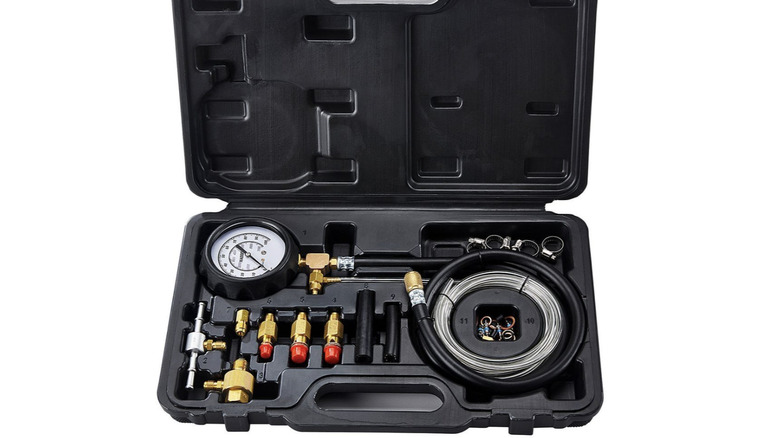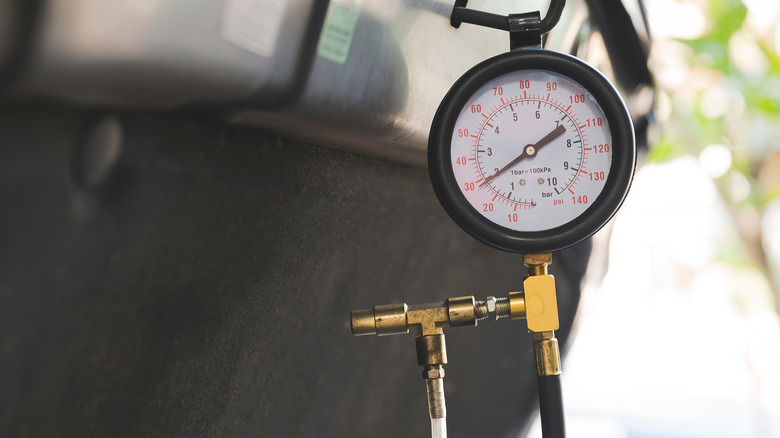How To Check If Your Car's Fuel Pump Has Gone Bad Or Not
You don't have to be Mr. Goodwrench to know that your car won't run without a steady supply of fuel, whether it runs on gasoline or diesel fuel. Less than three months ago, Honda recalled more than 4.5 million 2017-2020 model year vehicles due to faulty fuel pumps. If you own a Honda or Acura model that has one of the fuel pumps with a bad impeller, Honda should have notified you by February, but you can check using your vehicle's license plate number or VIN (Vehicle Identification Number) on the NHTSA website.
If you have a Honda or Acura and it's listed among the recalled vehicles, Honda will replace the fuel pump free of charge. Almost all new car warranties cover the fuel pump as part of the sometimes hazily defined "powertrain," and many third-party extended warranties include the fuel pump as well. If your car won't start, the first thing you should do is perform some simple tests to see if the battery is dead, then turn your troubleshooting eye to the ignition and fuel systems.
Most modern vehicles have fuel injection, which requires a high-pressure pump to move gas or diesel fuel from the tank to the injectors.
Several common types of fuel pumps and filters
If your car is idling rough or doesn't have its usual oomph, you might just need to clean your fuel injectors or replace the fuel filter. Many fuel filters are small canisters with a tube at each end that connects to fuel lines, but some vehicles use an oil filter style fuel filter that screws into a threaded mount on the engine. If the engine cranks without starting, it could be a sign of a dead or dying fuel pump. The fuel pump is typically located inside the tank, although some vehicles have an external pump mounted on the frame rail instead.
Engines with direct fuel injection (sometimes called GDI, or Gasoline Direct Injection) usually have a secondary fuel pump in the engine compartment. Older carbureted vehicles use a mechanical pump that is mounted on the engine block and driven by a lobe on the camshaft, although some owners install an inline electric pump to help combat vapor lock or improve performance while going uphill.
Regardless of what fuel pump configuration your vehicle has, there are a few easy tests you can do to see if it's working properly. If you're going to perform any of these checks, make sure you are parked in a safe place away from traffic and your parking brake is on.
You should hear the fuel pump when you turn your car on
You can do one quick fuel pump test without any tools at all. One of the jobs of a fuel pump is to pressurize the system before the car is started, and when you first turn the key to the 'on' position, the pump should run for a few seconds to bring the fuel inside the lines to the proper pressure. If you're in a quiet area, you can often hear a humming sound from the pump, even if it's located in the fuel tank. This test will only tell you if the pump is getting power; it won't verify that it is providing enough fuel for your engine to run properly.
If the pump doesn't seem to be working at all, a likely culprit is a blown fuse or relay. Consult your owner's manual for the location of these vital components. Fuses and relays are usually either in a box in the engine compartment or near the driver's knees, although some vehicles, like late-model BMW X5 and X6 SUVs and cars, have a fuse box in the cargo area.
You can also test for fuel pressure and volume
Fuel-injected engines require the pump to supply fuel at a consistent pressure. For gas engines, this is usually a few dozen pounds per square inch (PSI), although some high-performance cars need the pump to provide 80 PSI or more. Diesel engines require a much higher pressure to properly combust fuel; GM Duramax engines like the 6.6L 8-cylinder turbodiesel need thousands of pounds of fuel pressure to run properly.
If you suspect your fuel pump isn't working up to snuff, you can have a shop perform pressure and volume tests for you, but what fun is that? You also leave yourself vulnerable to being overcharged by a dishonest mechanic, and walking into a shop knowing exactly what is wrong with your car can make an often unpleasant and painful process go much more smoothly.
You can purchase a fuel pressure test kit from Harbor Freight for as little as $44.99, and most local auto parts stores will loan you one free of charge, provided you leave a credit or debit card on file for a deposit. Call the service department at your dealership to verify the correct specifications for your fuel pump, and bleed the pressure from the fuel system before starting the test.
A volume test is also helpful
Often there is a relief valve on the fuel rail. If so, cover it with a rag and release the pressure there. If not, you can pull the fuel pump fuse or relay and crank the engine until the vehicle stalls out. Once the pressure is released, connect the gauge to the fuel rail or fuel line using the appropriate adapter, replace the pump fuse or relay if you've removed it, crank the engine, and check the gauge. Even if your fuel pump is momentarily supplying fuel at adequate pressure, it may not be able to pump a sufficient volume to keep the engine running properly.
To perform a volume test, disconnect the fuel line from the fuel rail and run it into a plastic bottle. Taping the line to the mouth of the bottle can help prevent spills. Crank the engine for 15 seconds, measure how much fuel is in the bottle, and multiply by four to get the per minute flow rate. You can consult your dealership's service department for the proper fuel flow rate for your vehicle; for example, the pump in a 2007-2017 Hyundai Elantra should supply 29 gallons per hour. This works out to about 62 fluid oz per minute, or 15.5 oz for a 15-second test.




